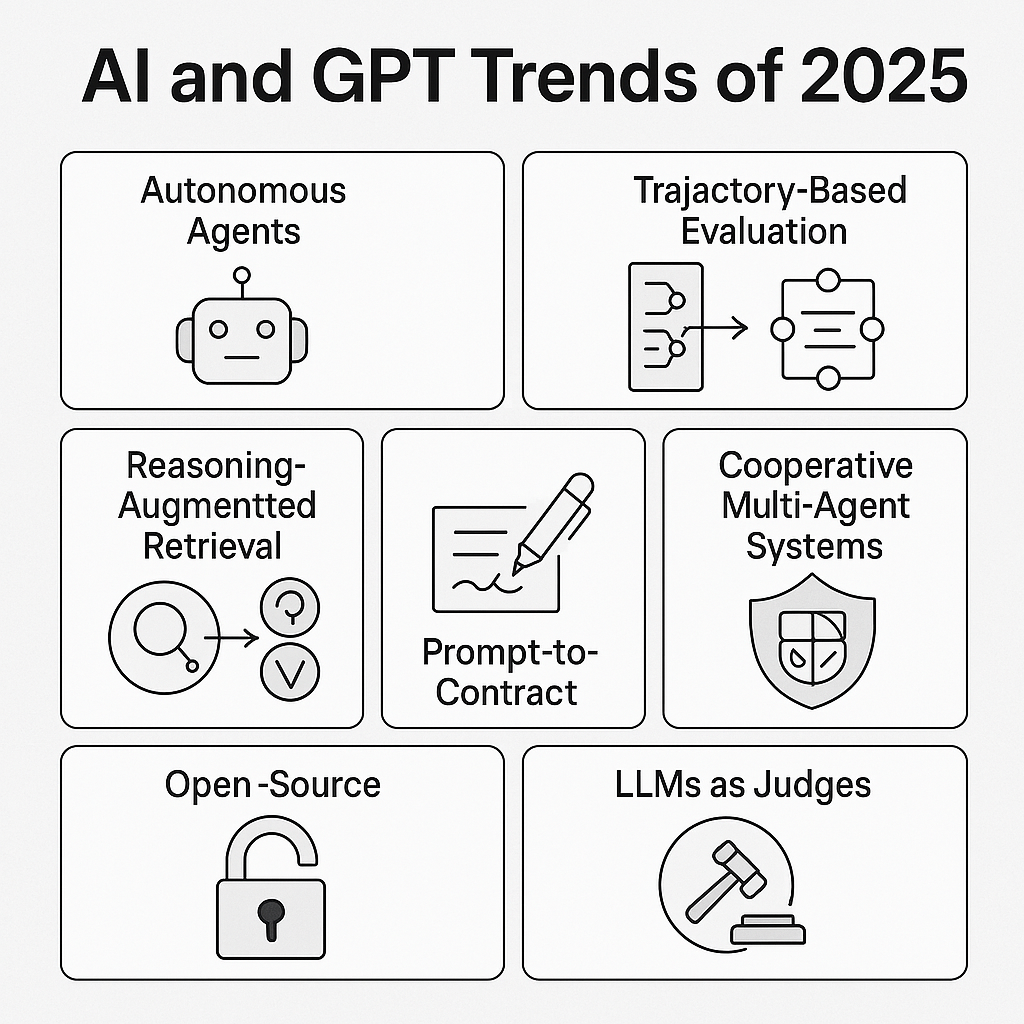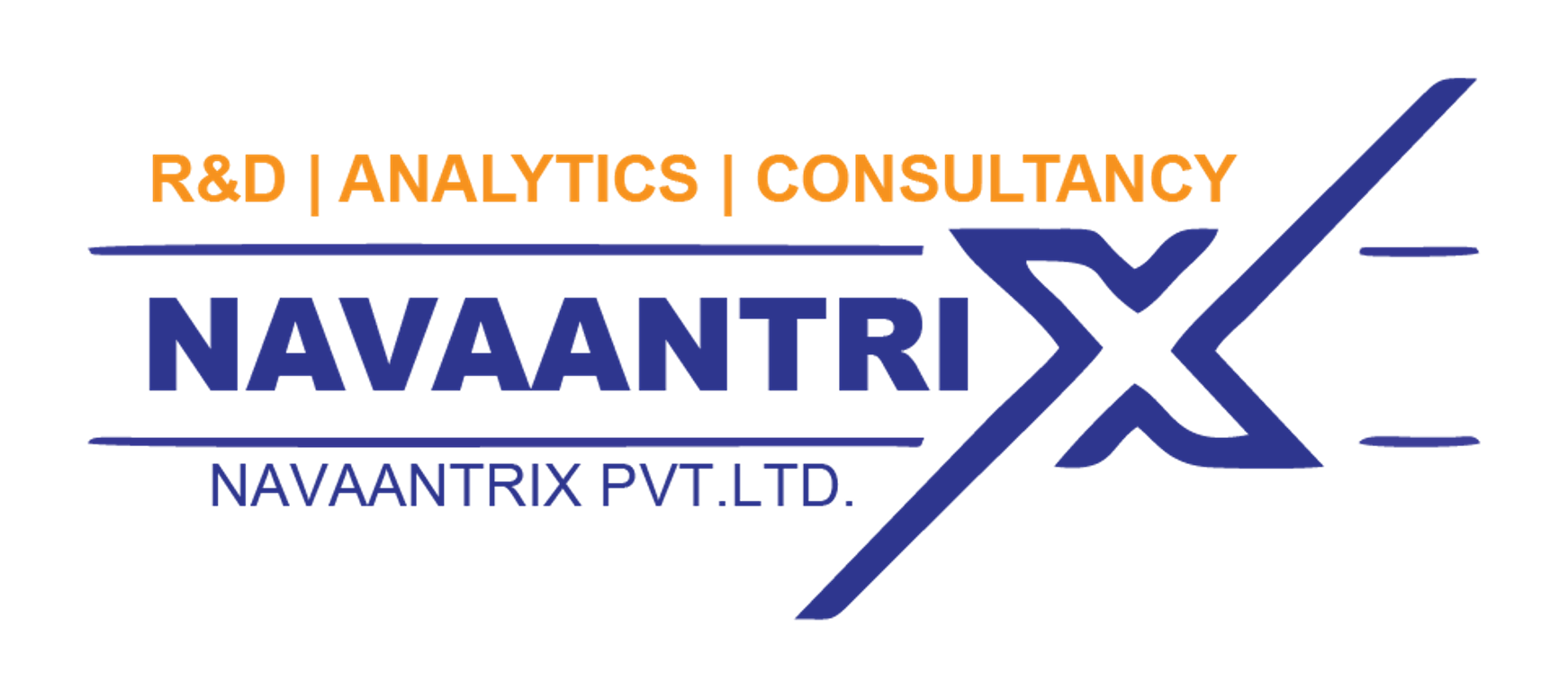AI and GPT Trends of 2025: The Future of Agentic AI and LLM Advancement.
Posted on April 8, 2025

The world of AI is experiencing a major shift. The evolution of Agentic AI and Large Language Models (LLMs) is reshaping industries, making systems more autonomous, scalable, and intelligent than ever before. These advancements are not only enhancing how AI can perform tasks but also redefining how we collaborate with it.
In this blog, we’ll explore the AI trends that are shaping 2025, with concrete examples, architectural insights, and open-source projects that reflect these exciting changes.
1. Agentic AI: The Era of Autonomous, Multimodal Agents
Agentic AI is evolving beyond simple automation to create complex and autonomous systems that can make decisions, collaborate, and take proactive actions in real-world environments.
Key Trend: AgentOps – Operational Frameworks for Managing AI Agents at Scale
As autonomous AI agents become more integrated into industries, the demand for scalable and efficient operational management increases. AgentOps provides the infrastructure to deploy, manage, and scale these agents efficiently.
Example: Open-source projects like OpenAI’s Codex (advanced in 2025) and AutoML platforms are evolving into more autonomous systems capable of dynamically reconfiguring themselves based on the task at hand. For example, Codex might autonomously handle software development tasks and integrate seamlessly with external APIs to handle queries, gather data, and adapt its code. This technology is coupled with cloud-based orchestration frameworks such as Kubeflow 2.0, which enables deployment and management of distributed agents working collaboratively in real-time across millions of nodes.
2. Trajectory-Based Evaluation: AI With Transparency in Reasoning – explainable AI
Rather than just evaluating the final result, Trajectory-Based Evaluation focuses on understanding the reasoning process behind AI decisions. This method tracks how decisions are made step-by-step, ensuring that actions can be explained and trusted.
Key Trend: Evaluating Reasoning with Multi-Step Decision Trees
This approach will be essential in industries where transparency and accountability are key. AI systems will not only produce results but will also explain how they arrived at those decisions, similar to how human decision-makers might explain their rationale.
Example: In regulatory compliance or ethics audits, AI systems, such as those used in autonomous financial services or AI-driven drug discovery, will be required to provide detailed logs of decision-making steps. For instance, an AI evaluating investment risk might explain why certain stocks were chosen over others, based on data from diverse sources, market analysis, and previous results. This type of evaluation will be powered by open-source tools like Elicit AI, a platform that aids in structuring explanations for LLMs, or AI Fairness 360, which offers transparency for models used in finance, law, and healthcare.
3. Multi-Agent Design Patterns: Creating Cooperative Agent Ecosystems
Multi-agent systems are becoming increasingly essential in 2025, with collaborative, peer-to-peer, and hierarchical systems all being utilized to achieve complex, large-scale tasks. These systems are ideal for building scalable AI solutions across industries.
Key Trend: Collaborative Agent Ecosystems in Smart Cities and Manufacturing
Multi-agent ecosystems will be a norm, especially in highly dynamic environments where multiple AI agents need to cooperate to handle tasks such as logistics, real-time optimization, and predictive maintenance.
Example: In smart cities, autonomous agents could manage everything from traffic lights to waste management, working together in real-time. For instance, Google's Waymo AI could integrate with local traffic management systems where each vehicle is an agent, negotiating real-time changes based on the status of other vehicles and city infrastructure. In open-source, projects like COLLIE (Collaborative Intelligent Environments) are experimenting with the design of distributed multi-agent systems for scalable urban environments.
4. Agentic RAG: Reasoning-Augmented Retrieval for Smarter, Context-Aware Search
Agentic RAG (Reasoning-Augmented Retrieval) will see massive growth, as it adds reasoning capabilities to traditional search. By combining data retrieval with contextual understanding, Agentic RAG provides a more intelligent and adaptive approach to information gathering.
Key Trend: Hyper-Personalized Search with Cross-Source Validation
RAG will enable smarter, context-aware retrieval by dynamically adapting to the user’s needs and querying across multiple sources, integrating with deeper reasoning.
Example: In customer service, imagine a large retail company using RAG-powered AI agents that can search through both structured (databases) and unstructured (forums, social media) data to answer customer queries. This would also include querying competitor products, reviews, and market trends. Open-source project like Haystack will have evolved to support cross-source RAG, enabling faster, multi-layered query expansions based on real-time user input.
5. Prompt-to-Contract: Structuring AI Tasks for Clearer Expectations
Prompt-to-Contract frameworks will replace vague prompt-based AI interactions with more structured agreements between users and agents. This ensures AI systems understand scope, goals, timelines, and feedback mechanisms before they begin a task.
Key Trend: Transparent Contracts Between Users and AI
AI agents will be able to negotiate contracts before beginning any task, ensuring there is a clear understanding of objectives and deliverables.
Example: In enterprise project management, an AI agent that oversees a software project might negotiate a contract with its human counterpart: setting deadlines, agreeing on what code quality standards must be met, and specifying feedback checkpoints. These contracts will be digitally signed and tracked via platforms like OpenAI’s GPT-5 integrated with contract management systems (like DocuSign AI).
6. Enterprise-Ready AI Stack: Secure, Multimodal AI Solutions
As AI continues to penetrate enterprises, the need for secure, multimodal, agent-driven workflows grows. The tools that enable secure and scalable deployment will be crucial for enterprises across sectors.
Key Trend: End-to-End AI Workflow Automation
Enterprise-ready AI stacks will seamlessly integrate multimodal capabilities, from natural language understanding to computer vision, ensuring that businesses can deploy AI solutions with ease and security.
Example: Google Agentspace 3.0 will support not just text-based workflows but also audio, video, and image inputs, enabling AI to operate in any multimodal environment. This will be particularly useful for industries like healthcare, where AI must process medical images, audio from patient interviews, and text from records. Open-source initiative like MLFlow and Kubeflow will evolve with better integration, allowing enterprise users to handle secure AI operations across multimodal data sources.
7. LLMs as Judges + Human-in-the-Loop for Transparency and Trust
LLMs will not only assist in decision-making but will also serve as judges for evaluating AI actions, ensuring that results are transparent, ethical, and aligned with human values.
Key Trend: Automated, Transparent Evaluation with Explainable AI
LLMs will be used to ensure transparency, acting as intermediaries between humans and AI agents. They will validate AI outputs, explain decision-making processes, and ensure compliance with ethical standards.
Example: An AI system designed to provide loan approvals will use an LLM to justify decisions to both the customer and regulators. The LLM will evaluate the fairness of the decision-making process and provide an explainable reason for why a particular applicant was approved or rejected. Open-source frameworks like Hugging Face’s Transformers and Google's BERT will likely evolve in 2025, enabling more advanced explainability features, ensuring that models can be audited and understood by humans.
Conclusion: Building the Future of AI
AI systems will become much more autonomous, transparent, and collaborative. Technologies like Agentic RAG, multi-agent systems, and Prompt-to-Contract frameworks will provide organizations with smarter tools for a variety of industries, from finance and healthcare to retail and logistics.
The open-source community is a key player in this transformation, with platforms like Haystack, Kubeflow, and OpenAI’s GPT-5 enabling cutting-edge AI developments. With these technologies in place, we are poised to experience an AI-powered future where systems can work intelligently, transparently, and efficiently—all while maintaining ethical standards.
